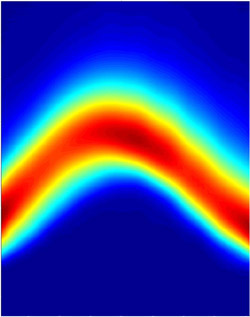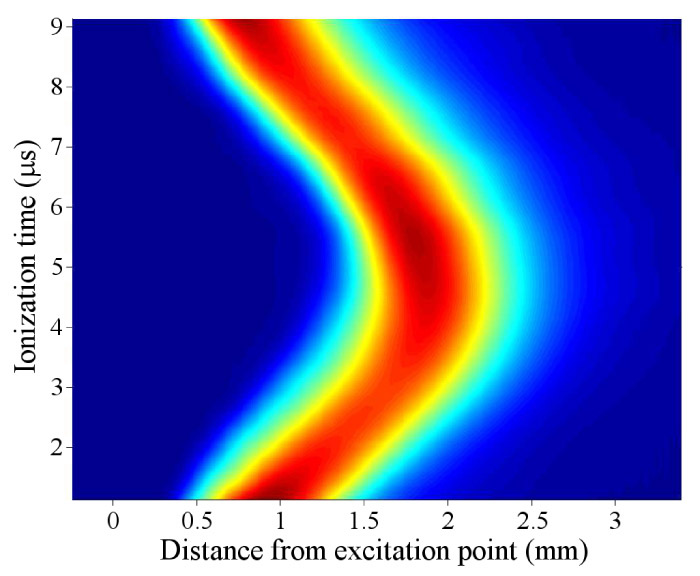Reflections of an Atom
Physicists have developed lenses and prisms to manipulate beams of atoms and molecules as though they were beams of light. Now, in the 21 July PRL, a team reports on their design and testing of an atomic mirror. Before reflection, the system must put the atoms into a highly excited state. Almost any atom or molecule can be excited into one of these states, so the mirror along with other components could lead to new experiments on the wave nature of atoms, as well as improved devices like gyroscopes or atomic clocks, researchers say.
Researchers use classical optics techniques to manipulate atoms in studies of atomic properties, in research on ultracold quantum states of atoms, and in devices like atom-based gyroscopes and atomic clocks. In the past researchers have built mirrors for ground state molecules that have electric dipole moments–asymmetries in the locations of positive and negative charges in their molecular structures. Other experiments reflected atoms and molecules excited into very high, so-called Rydberg states, which also have large dipole moments. But the particles could only graze off at shallow angles and couldn’t bounce straight back from a head-on collision.
Edward Vliegen and Frédéric Merkt of the Swiss Federal Institute of Technology (ETH) in Zurich have now built a mirror that can reflect an atom or molecule straight back after it’s excited into a Rydberg state. Using Rydberg states is not a drawback because physicists and chemists are already interested in these long-lasting, highly excited states. For example, since the electron orbits at a great distance from the nucleus in a Rydberg atom, researchers interested in ions can do experiments on these neutral atoms, where there isn’t the difficulty of packing repulsive particles at high density, Vliegen says. The mirror may also be useful in reflecting antihydrogen–which is often produced in a Rydberg state–away from the walls of its container.
In their experiment, Vliegen and Merkt created an atomic hydrogen beam that was very cold but moving fast, at 720 meters per second. When the atoms encountered an electric field generated by a set of metallic plates, they were hit by two laser pulses. The light excited them into a Rydberg state in which their large dipole moment was oriented opposite to the direction of the field. Like a tiny bar magnet in a magnetic field, an electric dipole always prefers to align with the electric field and avoid such anti-alignment. As the atoms moved forward, they encountered a steeply increasing field strength–up to 2000 volts per centimeter–which was even less favorable to the anti-aligned atoms. Unable to easily shed energy and align with the field, the atoms acted much like balls rolling up a hill. They slowed down, stopped, and then traveled back down the hill in the direction from which they came.
The Swiss researchers “produced a very sophisticated design to do this,” including a good set of custom-built lasers to excite the atoms, says Harold Metcalf of Stony Brook University in New York. They were also able to precisely calculate the electric field pattern, he says, which was another component of their success. Metcalf believes improvements in atom optics, such as the new mirror, could lead to better experiments on the wave nature of atoms, where atoms display light-like properties such as interference.
–Corinna Wu
Corinna Wu is a freelance science writer in Alexandria, Virginia.





